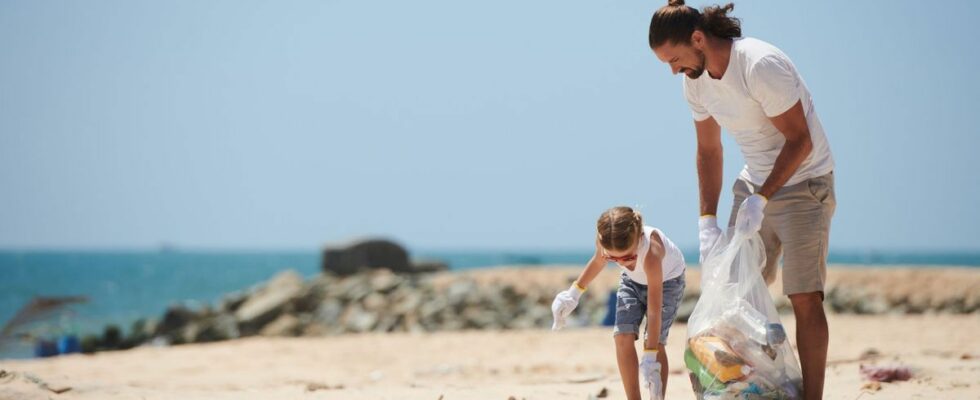Published on
Updated
Reading 2 min.
One in five French beaches is regularly polluted by bacteria and 5% of them are “to be avoided”, according to a study published Friday by the Eau et Rivières de Bretagne (ERB) association, which calls for better control of agricultural pollution .
In total, 93 beaches (5.02%) are “to be avoided” and 316 “not recommended” (17.04%) out of the 1,854 beaches in France and Corsica, according to the ranking of the Breton association. , published on the website labelleplage.fr.
Conversely, swimming is “recommended” for 690 beaches (37.2%) and “not very risky” for 755 (40.7%).
The worst ranked beaches are in the Alpes-Maritimes, the North, Pas-de-Calais, Calvados and the northern coast of Brittany. Beaches in Landunvez (Finistère), Boulogne-sur-Mer (Pas-de-Calais) or Saint-Laurent-du-Var (Alpes-Maritimes) occupy the bottom of the ranking.
The best ranked are located on the Atlantic coast, in Occitanie and Corsica, with the beaches of Lège-Cap-Ferret (Gironde), Palavas-les-Flots (Hérault) or Etel (Morbihan) in the leading group.
The association developed this ranking based on the results of official analyses, from which it derived a new indicator, more precise according to it than that published by the Ministry of Health (bathing.sante.gouv.fr).
“We tried to design another classification with the same data. Because many beaches are classified as good or excellent even though they are subject to pollution.“, Christophe Le Visage, vice-president of ERB, explained to AFP.
“With the concentrations of bacteria observed on certain beaches, there are risks for swimmers“, he observes.
The association assigns a score out of 100 to each beach by evaluating the health risk for each sample taken by the authorities: if 10% of the samples are classified “average” or “poor”, the score is 90.
This classification thus creates four categories of beaches, where swimming is “recommended” (score equal to or greater than 95), “low risk” (between 85 and 95), “not recommended” (from 70 to 85) and “to be avoided” (less than 70).
The association is calling for more information and monitoring of the quality of bathing water and better supervision of livestock effluent.
“Millions are invested in sanitation, while many polluted beaches are located in areas where there are few tourists and little urbanization, such as in Northern Brittany.“, remarks Mr. Le Visage, who estimates that around sixty Breton beaches are affected by agricultural pollution.
“In terms of bacteria, one pig is the equivalent of thirty humans“, he emphasizes.
